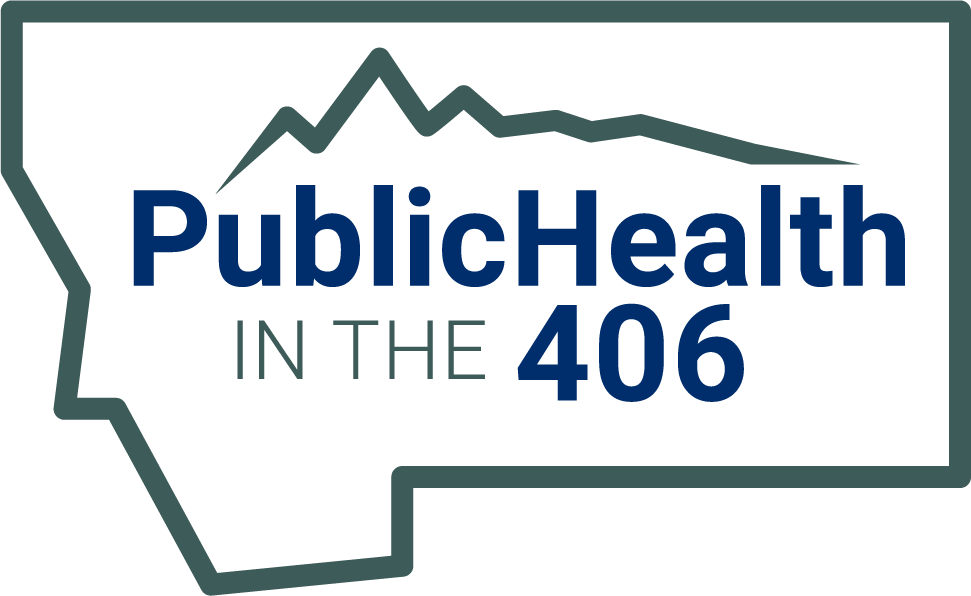Gonorrhea
Gonorrhea is a sexually transmitted infection (STI) caused by the bacterium Neisseria gonorrhoeae that can cause infection in the urethra, rectum, female reproductive tract, mouth, throat, or eyes. Gonorrhea is very common and most often spread during vaginal, oral, or anal sexual activity. The infection can also be transmitted to infants during childbirth and will most commonly affect the eyes.
Screening is recommended at least annually, and sometimes more often, if you are a woman under the age of 25, a woman at risk of a sexually transmitted infection, or a man who has sex with men.
- How do I know if I have it?
- Am I at risk?
- I'm pregnant. If I have gonorrhea, how can I protect my baby from getting it?
- Should I be tested for gonorrhea?
- Is there a cure for gonorrhea?
- When can I have sex again after my gonorrhea treatment?
- What happens if I have a gonorrhea infection and don't get treated?
How do I know if I have it?
Gonorrhea often has no symptoms, but it can cause serious health problems, even without symptoms.
Symptoms in women:
Most women with gonorrhea do not have any symptoms. Even when a woman has symptoms, they are often mild and can be mistaken for a bladder or vaginal infection. Symptoms in women can include:
- Painful or burning sensation when peeing
- Increased vaginal discharge
- Vaginal bleeding between periods
Symptoms in men:
Men who do have symptoms may have:
- A burning sensation when peeing
- A white, yellow, or green discharge from the penis
- Painful or swollen testicles (although this is less common)
Symptoms from rectal infections:
Rectal infections may either cause no symptoms or cause symptoms in both men and women that may include:
- Discharge
- Anal itching
- Soreness
- Bleeding
- Painful bowel movements
See your healthcare provider if you notice any of these symptoms. You should also see a provider if your partner has an STI or symptoms of one. Symptoms can include an unusual sore, a smelly discharge, burning when peeing, or bleeding between periods.
Am I at risk?
Sexually active people can get gonorrhea through vaginal, anal, or oral sex without a condom with a partner who has gonorrhea. A pregnant woman with gonorrhea can give the infection to her baby during childbirth.
Prevention
The only way to completely avoid STIs is to not have vaginal, anal, or oral sex. If sexually active, using condoms the right way and being in a long-term mutually monogamous relationship lowers the chance of possible infection.
I'm pregnant. If I have gonorrhea, how can I protect my baby from getting it?
If you are pregnant and have gonorrhea, you can give the infection to your baby during delivery. This can cause serious health problems for your baby. If you are pregnant, talk to your healthcare provider about getting the correct examination, testing, and treatment. Treating gonorrhea as soon as possible will make health problems for your baby less likely.
Should I be tested for gonorrhea?
If you are sexually active, have an honest and open talk with your healthcare provider. Ask them if you should get tested for gonorrhea or other STIs.
If you are a sexually active gay or bisexual man, you should get tested for gonorrhea every year. If you are a sexually active woman, you should get tested for gonorrhea every year if you are:
- Younger than 25 years
- 25 years and older with risk factors, such as new or multiple sex partners, or a sex partner who has a sexually transmitted infection
Testing is also recommended during pregnancy in some cases.
Is there a cure for gonorrhea?
Yes, the right treatment can cure gonorrhea. It is important that you take all of the medicine your healthcare provider gives you to cure your infection. Do not share medicine for gonorrhea with anyone. Although medicine will stop the infection, it will not undo any permanent damage caused by the disease.
It is becoming harder to treat some gonorrhea, as drug-resistant strains of gonorrhea are increasing. Return to a healthcare provider if your symptoms continue for more than a few days after receiving treatment.
When can I have sex again after my gonorrhea treatment?
Wait seven days after finishing all medicine before having sex. You and your sex partner(s) should avoid having sex until you have each completed treatment and your symptoms are gone. This will help prevent you and your partner(s) from giving or getting gonorrhea again. Those with gonorrhea should be retested about three months after treatment of an initial infection, even if their partners received successful treatment.
If you've had gonorrhea and took medicine in the past, you can still get it again. This happens if you have sex without a condom with a person who has gonorrhea.
What happens if I have a gonorrhea infection and don't get treated?
Untreated gonorrhea can cause serious and permanent health problems.
In women, untreated gonorrhea can cause pelvic inflammatory disease (PID). Some of the complications of PID are:
- Formation of scar tissue that blocks the fallopian tubes
- Ectopic pregnancy (pregnancy outside the womb)
- Infertility (not being able to get pregnant)
- Long-term pelvic/abdominal pain
In men, gonorrhea can cause a painful condition in the tubes attached to the testicles, which can, in rare cases, lead to infertility.
Rarely, untreated gonorrhea can also spread to your blood or joints. This condition can be life-threatening.
Untreated gonorrhea may also increase your chances of getting or giving HIV.
Screening
Please see CDC STI Treatment Guidelines.
In women:
- Sexually active women under 25 years of age.
- Sexually active women 25 years of age and older if at increased risk.
- Retest approximately 3 months after treatment.
- Pharyngeal and rectal gonorrhea screening can be considered in females based on reported sexual behaviors and exposure through shared clinical decision making between the patient and the provider.
In pregnancy:
- All pregnant women under 25 years of age.
- Pregnant women 25 and older if at increased risk
- Retest during the 3rd trimester for women under 25 years of age or at risk
- Pregnant women with chlamydial infection should have a test of cure 4 weeks after treatment and be retested within 3 months.
Men who have sex with women:
- There is insufficient evidence for screening among heterosexual men who are at low risk of infection.
Men who have sex with men:
- At least annually for sexually active MSM at sites of contract (urethra, rectum) regardless of condom use
- Every 3 to 6 months if at increased risk (i.e. MSM on PrEP, with HIV infection, or if they or their sex partner have multiple partners)
Transgender and gender diverse persons
- Screening recommendations should be adapted based on anatomy (i.e. annual, routine screening for gonorrhea in cisgender women < 25 years old should be extended to all transgender men and gender diverse people with a cervix. IF over 25 years old, person with a cervix should be screened if at increased risk.
- Consider screening at the rectal site based on reported sexual behaviors and exposure
Persons with HIV:
- For sexually active individuals, screen at first HIV evaluation, and at least annually thereafter.
- More frequent screening might be appropriate depending on individual risk behaviors and local epidemiology.
Treatment
See CDC STI Treatment Guidelines
Uncomplicated Gonococcal Infection of the Cervix, Urethra, or Rectum
Recommended Regimen for Uncomplicated Gonococcal Infection of the Cervix, Urethra, or Rectum Among Adults and Adolescents
Ceftriaxone 500 mg* IM in a single dose for persons weighing <150 kg
If chlamydial infection has not been excluded, treat for chlamydia with doxycycline 100 mg orally 2 times/day for 7 days.
* For persons weighing ≥150 kg, 1 g ceftriaxone should be administered.
Alternative Regimens
If cephalosporin allergy:
Gentamicin 240 mg IM in a single dose
PLUS
Azithromycin 2 g orally in a single dose
If ceftriaxone administration is not available or not feasible:
Cefixime 800 mg* orally in a single dose
* If chlamydial infection has not been excluded, providers should treat for chlamydia with doxycycline 100 mg orally 2 times/day for 7 days.
Recommended Regimen for Uncomplicated Gonococcal Infection of the Pharynx Among Adolescents and Adults
Ceftriaxone 500 mg* IM in a single dose for persons weighing <150 kg
- For persons weighing ≥150 kg, 1 g ceftriaxone should be administered.
Managment Considerations
To maximize adherence with recommended therapies and reduce complications and transmission, medication for gonococcal infection should be provided on-site and directly observed.
To minimize disease transmission, persons treated for gonorrhea should be instructed to abstain from sexual activity for 7 days after treatment and until all sex partners are treated (7 days after receiving treatment and resolution of symptoms, if present).
All persons who receive a diagnosis of gonorrhea should be tested for other STIs, including chlamydia, syphilis, and HIV. Those persons whose HIV test results are negative should be offered HIV PrEP.
A test-of-cure is unnecessary for persons with uncomplicated urogenital or rectal gonorrhea who are treated with any of the recommended or alternative regimens; however, for persons with pharyngeal gonorrhea, a test-of-cure is recommended, using culture or nucleic acid amplification tests 7–14 days after initial treatment, regardless of the treatment regimen. Because reinfection within 12 months ranges from 7% to 12% among persons previously treated for gonorrhea (29,30), persons who have been treated for gonorrhea should be retested 3 months after treatment regardless of whether they believe their sex partners were treated. If retesting at 3 months is not possible, clinicians should retest within 12 months after initial treatment.
Doxy-PEP should be considered for future post-exposure prophylaxis.
Treatment Failure
Cephalosporin treatment failure is the persistence of N. gonorrhoeae infection despite recommended cephalosporin treatment; such failure is indicative of infection with cephalosporin-resistant gonorrhea among persons whose partners were treated and whose risk for reinfection is low.
Treatment failure should be considered for persons whose symptoms do not resolve within 3–5 days after recommended treatment and report no sexual contact during the post-treatment follow-up period and persons with a positive test of cure (i.e., positive culture >72 hours or positive NAAT >7 days after receiving recommended treatment) when no sexual contact is reported during the post-treatment follow-up period. Treatment failure should also be considered for persons who have a positive culture on test of cure, if obtained, if evidence exists of decreased susceptibility to cephalosporins on antimicrobial susceptibility testing, regardless of whether sexual contact is reported during the post-treatment follow-up period.
If you suspect gonorrhea treatment failure, please contact your local county or tribal public health department.
Expedited Partner Therapy (EPT)
Expedited Partner Therapy (EPT) is a harm reduction strategy. It is the clinical practice of treating the sex partners of people with diagnosed chlamydia or gonorrhea, who are unable to unlikely to seek timely treatment, by providing medications or prescriptions to the patient to provide to the partner. At present, the only CDC recommended treatment of uncomplicated urogenital, anorectal, and pharyngeal gonorrhea is monotherapy with a single intramuscular dose of ceftriaxone 500 mg. If the recommended injectable treatment is not possible, then EPT via a single dose of 800 mg cefixime should be considered.
For more information, see: Clinical Treatment of Gonorrhea | CDC




